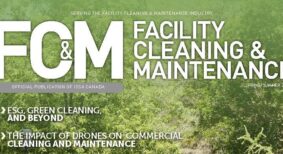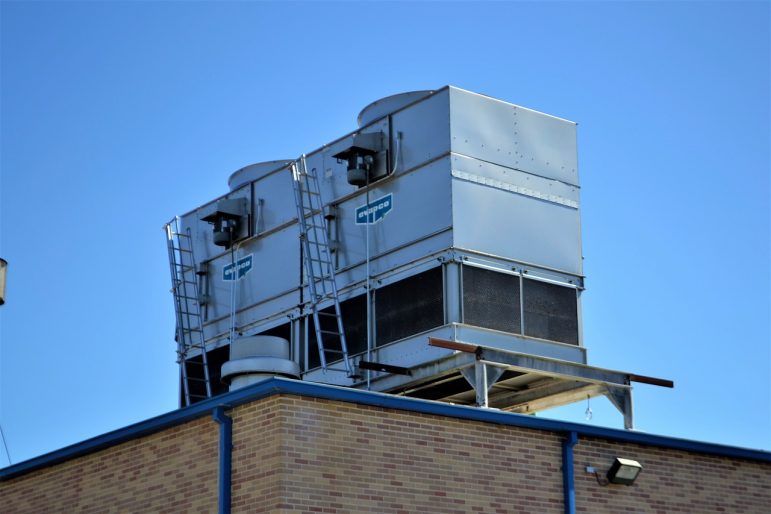Upgrading HVAC systems has been a priority for many facility managers during the pandemic, but many companies do not believe they have reliable and unbiased information for improving their indoor air quality, according to a survey from Omni CleanAir.
The maker of commercial-grade air purification systems surveyed more than 430 managers in facilities across the U.S. about the COVID-19 precautions and defence measures that have been implemented in the last 12 months.
The survey found that virtually all companies (95.6 per cent) made moves to combat COVID-19 transmission in their poorly ventilated, indoor spaces.
Of the survey respondents whose businesses hadn’t yet taken actions to improve indoor air quality, most indicated they would allocate spending to ventilation in the next year. The small minority who said they would do nothing cited lack of education and
information, as well as satisfaction with current air quality standards in their facilities.
RELATED: COVID-19 and HVAC systems
79 per cent plan to invest in solutions to improve indoor air quality within the next 12 months and 73 per cent expect to do so by upgrading or implementing HVAC systems.
40 per cent anticipate spending between $50,000 and $500,000 on HVAC upgrades, which the report says vastly underestimates the cost.
50 per cent said they have no plans to do anything about indoor air quality because of
insufficient education about the importance of ventilation and indoor air quality. Of those, 75 per cent said current ventilation and indoor air quality already met their safety standards.
Various solutions attempted
The most popular approach was to upgrade existing HVAC systems, as these changes can be done quickly and easily. However, the survey summary noted that HVAC upgrades are expensive, typically costing more than US$500,000 and in some cases as much as US$5 million depending on the number and size of the facilities.
In some cases, businesses felt compelled to try relatively new and unproven ionization technologies, which are increasingly under attack from academics and government agencies for being ineffective and possibly dangerous.
Unfortunately, some facility owners, operators, and managers made subpar investments, spending millions of dollars with limited success.
“The noisy environment, lack of transparent and easily understood real-world efficacy
data, and unscrupulous COVID-19 opportunists appear to have clouded the landscape
so much that many businesses simply were unable to make informed investment
decisions about indoor air quality solutions,” said Paul de la Port, president of Omni CleanAir.
The improvements made within the last 12 months included:
- Upgrading existing HVAC systems that support improved filtration (73 per cent)
- Upgrading existing systems that support medical-grade filtration (64 per cent)
- Installing new HVAC systems entirely (61 per cent)
- Deploying portable air purification systems like HEPA filtration machines (52 per cent)
- Deploying UVGI systems for germicidal irradiation (42 per cent)
- Deploying ionization technologies (38 per cent)
The data also showed that HR managers and their COVID-19 task force colleagues are vastly underestimating the cost of HVAC upgrades. Among those who had not yet invested in solutions to improve indoor air quality, a majority anticipated they will upgrade their HVAC systems despite the growing evidence that these upgrades have minimal effect on improving indoor air quality or reducing transmission risk.
RELATED: Scientists find lack of focus on air quality
Ranging priorities
When asked to rank eight measures in order of importance when it comes to combating COVID-19 in their organization, HR managers on aggregate ranked handwashing or sanitizing stations and supplies the highest followed by physical distancing measures and then centralized HVAC system upgrades.
That trio of options was followed by portable air purification (HEPA) systems or other indoor air quality technologies, masks and other PPE, opening windows and doors, running box or ceiling fans, and implementing alternate or remote work schedules.
“It’s clear from the survey that HR and facilities managers struggled to sift through the COVID-19 noise to determine the best options for combating the virus and while most recognized that it is airborne, the best solution to fighting it remains unclear,” concluded de la Port. “For example, we know that you only have a 1 in 10,000 chance of getting infected via a contaminated surface, yet it’s at the top of the list of things businesses have done and are continuing to do to fight COVID-19.”
Read the full survey findings here.








